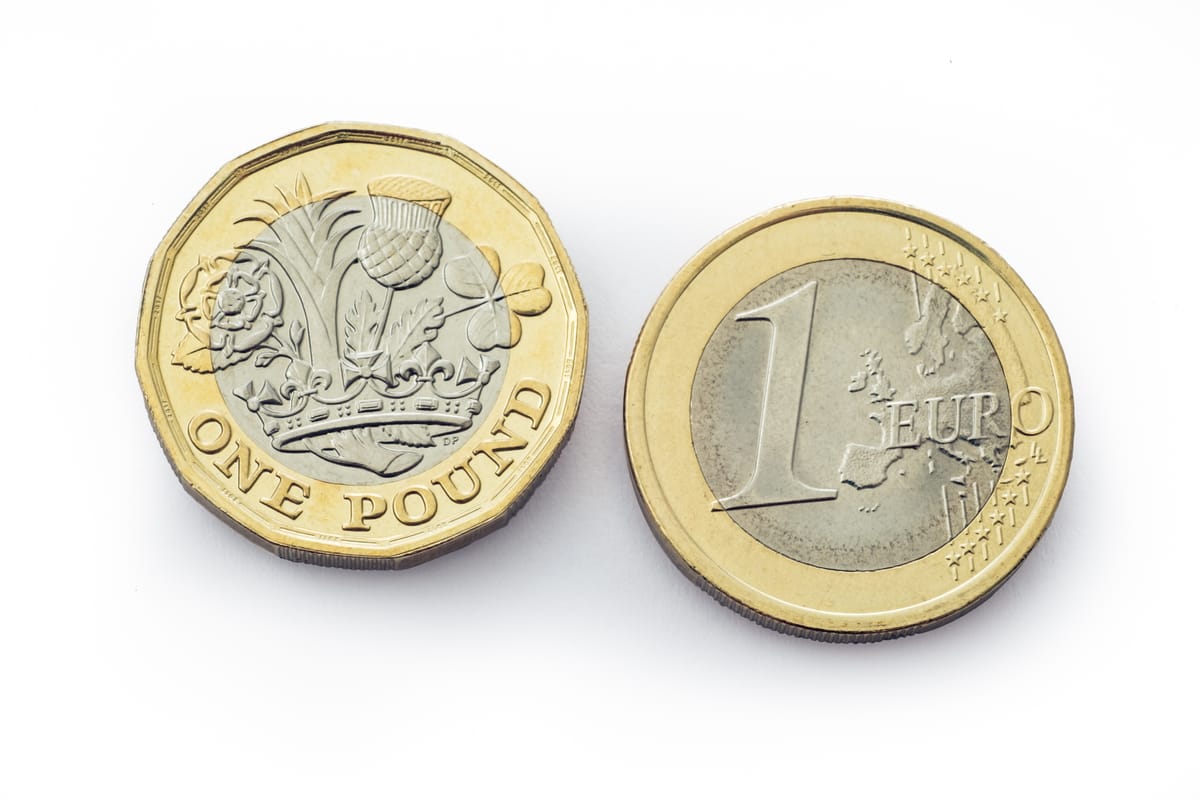GBP/EUR exchange rate week review: pound rises versus euro as UK inflation heats up
18/11/2024 to 22/11/2024: The pound euro (GBP/EUR) exchange rate recovered from a 13-day low after UK inflation surged above the Bank of England's 2% target, curbing December interest rate cut expectations.

Monday
The pound euro (GBP/EUR) exchange rate touched a 12-day low in the €1.19 mid-range.
The increasingly risk-sensitive pound was undermined by a risk-averse market mood that helped the safe haven single currency to garner investor attention.
Having rebounded, UK currency was dealt another blow by the CEBR think tank which estimated that Donald Trump’s trade tariffs could reduce UK GDP by 0.9% by the end of his four-year term.
Tuesday
The pound briefly hit a 13-day low around €1.194 amid concerns about the Kremlin’s threat of a nuclear response to Ukraine using US weapons to target Russian territory.
This was compounded by hawkish comments from Bank of England (BoE) officials hinting that borrowing costs could be reduced faster than markets expect.
The euro was also undermined by Russia’s abrasive rhetoric, before regaining ground following a pullback in the dollar, with which the single currency has a negative correlation.
Wednesday
The pound jumped to a five-day high above €1.20 after the UK’s Consumer Price Index (CPI) reported that headline inflation rose sharply in October, exceeding forecasts. The print increased pressure on the BoE to delay further interest rate cuts until the spring, bolstering the UK currency.
Meanwhile, the euro stumbled as escalating tensions between Russia and Ukraine detracted European investors.
Contact a currency specialist to discover how they can help you take control of exchange rates.
Thursday
The pound was undermined by higher-than-expected British public borrowing, which rose to £17.4bn in October, above forecasts for £12.3bn, stoking fears about the health of the UK’s public finances.
The pound euro rate was kept afloat by Eurozone consumer confidence, which sunk to its lowest level in five months, and ongoing fears around the Russia-Ukraine war – both of which weighed on the single currency.
Friday
The pound euro rate was choppy amid downbeat data from both sides.
A flurry of lacklustre numbers from the UK economy began with UK retail sales, which contracted more than expected in October. This was followed by confirmation that the UK economy recorded a sharp slowdown in November. According to S&P Global, the UK composite PMI dropped to 49.9 from 51.8 in the wake of the October budget. The PMI for the UK’s powerhouse services sector fell from 52 to the make-or-break 50 threshold that separates expansion from contraction.
The single currency was undermined by the Eurozone's PMI survey for November which showed a deterioration in economic conditions. This prompted speculation that the European Central Bank (ECB) will hasten the pace of its interest rate cuts to boost businesses and consumers, denting the euro. The S&P Global Eurozone composite PMI fell to 48.1 in November from 50 in October, entering contraction territory.
The pound euro rate ended the week at 1.202.
Looking ahead
Market moving data from the German economy, the largest in the bloc, will be in sharp focus for investors next week. The consumer prices index and retail sales figures hit the headlines on Thursday and Friday respectively.
